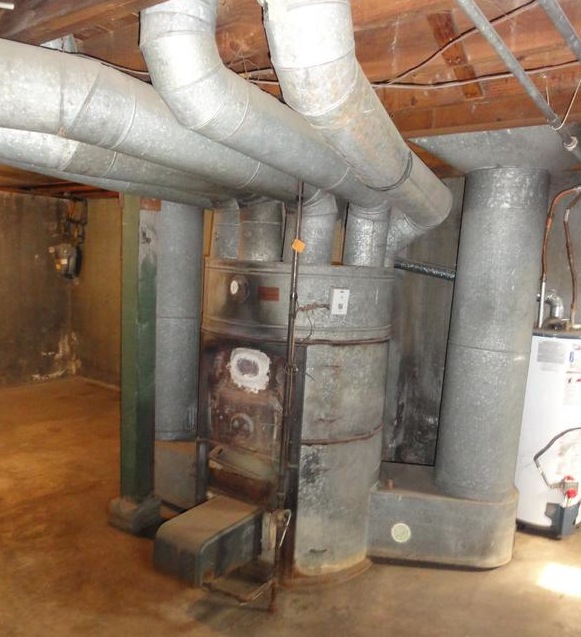Gravity Furnace Inspection
by Nick Gromicko, CMI®

Their design is simple: fuel is inserted through a door into the combustion chamber, which heats the surrounding air before it rises into the upper levels of the dwelling through ductwork running throughout the walls and floors of the building. Vents that are strategically attached to the ductwork allow the hot air to escape into the rooms of the home. This design is sometimes referred to as an "octopus furnace."
These advantages are slight in comparison with the following drawbacks of the system:
- inefficiency. According to some experts, only half of the heat generated by a gravity furnace is used to warm the house, while the rest is vented out of the chimney. By contrast, many modern forced-air furnaces are 95% efficient;
- heating expenses. Due to their inefficiency, homeowners typically pay more to heat their homes with a gravity furnace than they would with a conventional furnace;
- slow response time. Lacking a means that is independent of gravity to force air throughout a house, these furnaces can take a long time to heat a room after they’re turned on;
- greenhouse gas emissions. Because more fuel must be burned in order to heat the home, gravity furnaces emit more greenhouse gasses than modern alternatives;

- no air conditioning. Because gravity furnaces lack a blower fan to distribute air, they cannot be coupled with a central air-conditioning unit;
- asbestos. Before much was known about the hazards associated with asbestos, asbestos insulation was used as an insulator and fireproofing material on gravity furnaces as they were installed. Inspectors may notice thick, white wrapping around the furnace and its components. This material is toxic, its fibers are known carcinogens, and the material should not be handled or disturbed. Prospective buyers should negotiate the price of the house to include the cost of removing the asbestos insulation, and possibly the furnace, as well, by a qualified professional;
- oversized ductwork. The furnace’s ductwork is oversized and in the wrong location to be used by modern furnaces. When the gravity furnace is eventually replaced, the ductwork will also need to be modified or abandoned; and
- carbon monoxide in the supply air, which can result from openings in the seams of the burner chamber.
Inspection may also include the following defects:
- items stored nearby that may block the air flow, such as cleaning equipment or newspapers;
- dust or lint on the register. Without periodic maintenance, dust or lint may be carried by the draft into the furnace; and
- corrosion.
Functional gravity furnaces, despite their limitations, do not need to be replaced. Replacement is usually recommended, however, because units still in operation today have surpassed their life expectancy, and they lack the clear advantages and safety of modern forced-air heating systems.

